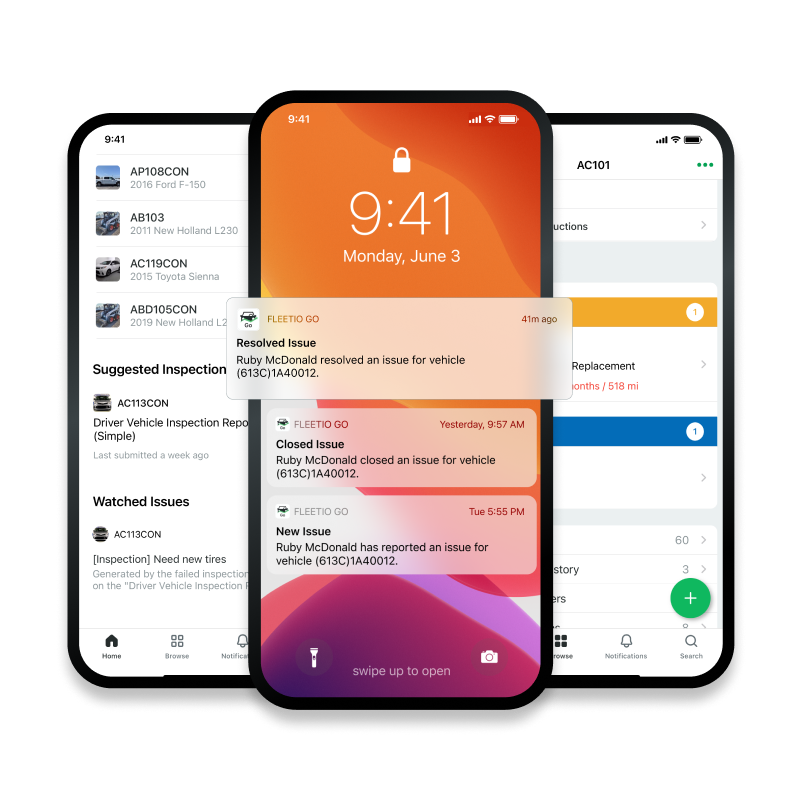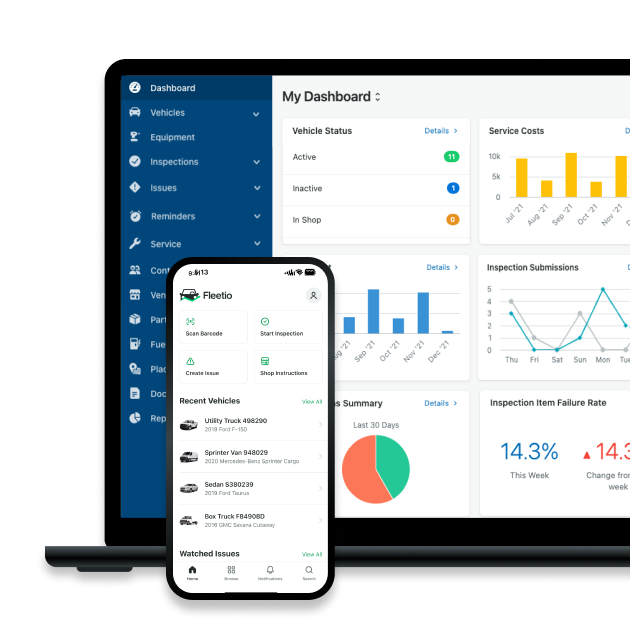Why and How to Use Driver Scoring to Improve Safety
Implementing a driver scoring plan can help fleets better understand how driver behavior impacts the operation — for better or worse — while also incentivising driver engagement. Fair and easy-to-follow driver scoring programs not only help catch issues, they provide drivers with a clear goals-and-rewards system, fostering improved performance.
Oct 27, 2023
5 min read

TL;DR: What is driver scoring?
Driver scoring tracks and evaluates driver behavior to improve safety, reduce costs, and encourage accountability across your fleet. Driver scores are generated from telematics and GPS data, then analyzed through fleet management software to create scorecards with real-time insights.
Key benefits of driver scoring:
- Identifies risky behavior (e.g., speeding, harsh braking) before accidents happen
- Improves fuel efficiency and reduces wear and tear
- Supports compliance with safety regulations and legal standards
- Boosts driver engagement with transparent scoring and rewards
Best practices:
- Be transparent about scoring criteria
- Provide feedback and coaching based on results
- Use scores to guide training programs
- Involve drivers in improving their performance
Driver scoring is a smart, data-driven way to promote safer driving and streamline fleet operations.
The safety and efficiency of fleet assets can make or break a fleet operation. Every mile driven, every delivery made, every passenger transported comes with its own set of challenges and risks. Ensuring the consistent operability and safety of your fleet is not just a goal; it's a necessity. But how can you monitor and enhance driver performance, reduce costs and bolster safety simultaneously? The answer? Driver scoring.
What is Driver Scoring?
Driver scoring is a powerful tool for fleets of any size, in any industry. Simply put, driver scoring is a comprehensive evaluation of driver behavior and performance. It involves the systematic analysis of various driving parameters and habits to create a quantifiable score, which reflects a driver’s effectiveness behind the wheel.
What are Driver Scorecards?
Central to driver scoring are driver scorecards. These scorecards are a fleet's window into the daily activities of their drivers, monitoring and measuring driver behavior and providing insights into what’s working and what's not. Key performance indicators (KPIs) serve as the building blocks for these scorecards. These KPIs include metrics like speed, harsh braking, rapid acceleration, idle time and even adherence to traffic rules.
Why is Driver Scoring Important?
Driver scoring is not just about collecting numbers — it’s about using those numbers to drive improvements. The safety of your drivers — and passengers, if applicable — is priority one. Driver scoring helps identify risky behaviors, allowing for corrective action before accidents happen. Plus, driver scoring helps surface increased fuel consumption caused by driver behavior. By promoting safe, fuel-efficient driving habits, you can reduce asset wear and tear, leading to substantial cost savings in two of the largest cost centers for fleets.
In addition to improving safety and reducing maintenance and fuel spend, driver scoring helps fleets meet regulatory requirements, ensuring that your fleet adheres to industry standards and legal obligations.
How Does Driver Scoring Work?
Driver scoring begins with the collection of data from various sources, including telematics. This data encompasses a wide range of variables, from speed and location to vehicle diagnostics. When integrated with fleet management software (FMS), this data becomes consolidated with the rest of the fleet’s data, allowing you to pull comprehensive driver behavior-related reports in real time. Once the data is collected, it is meticulously analyzed to generate driver scores that can be shared with both drivers and managers, providing actionable insights into driving behavior.
A Quick Look at Scoring Software
Because driver scoring relies heavily on data analytics, many fleets are opting to use fleet technologies to streamline the process. Software can play a pivotal role in the collection and calculation of driver scores, including:
- Telematics systems: Telematics gathers real-time data on vehicle location, speed, fault alerts and driver behavior
- GPS trackers: Providing accurate location data, GPS trackers are indispensable for monitoring routes and ensuring timely deliveries and/or service
- Event data recorders (EDRs): These devices record crucial information during a collision or harsh driving event, offering a detailed perspective on driver behavior
- Fleet management software (FMS): FMS serves as the command center for all your fleet data, allowing for automated data aggregation and analysis
Smart insights, stronger connections
If you like your tools, keep them. Integrate your telematics devices with Fleetio to unlock driver scoring, diagnostics, GPS data and more — all in one connected dashboard.
See partnersTips for Effective Driver Scoring
Effective driver scoring isn't just about crunching numbers, it’s about creating a culture of safety and continual improvement within your fleet. Here are a few considerations to take into account when implementing a driver scoring plan:
- Transparency: Ensure that the scoring process is transparent, with drivers understanding how their scores are calculated and what expectations they need to meet
- Feedback and coaching: Drivers should receive constructive feedback based on their scores, along with guidance on how to improve
- Training and development: Use driver scoring as a roadmap for training and development programs. Identify areas where additional training can lead to safer and more efficient driving
- Driver engagement: Involving your drivers in the process goes hand-in-hand with improving driver satisfaction. When they see the benefits of improved scores, they become active participants in the quest for safer, more efficient driving
Improve Driving Behaviors and Reduce Risk
Driver scoring is an invaluable tool. By harnessing the power of data and fleet solutions, you can boost safety and efficiency while also reducing maintenance and fuel costs. Driver scoring helps surface driver issues in real time so the proper steps can be taken for correction, including training, ride-alongs and/or new/updated driver certifications.
Adopting driver scoring practices and leveraging technology is a strategic move that no fleet manager can afford to overlook. It’s not just about optimizing operations; it's about driving your fleet towards success.
What's with the disconnect?
When your data lives in silos, visibility is nearly impossible. Fleetio brings it all together — with clear, actionable insights up close and personal.
Request a demoFAQs
How is a driver score calculated?
Driver scoring is a comprehensive evaluation of driver behavior and performance calculated from metrics like speed, harsh braking, rapid acceleration, idle time and even adherence to traffic rules.
What is a high driving score?
This largely depends on the scoring system and software you use, as some consider higher scores bad while others consider lower scores bad.
How can drivers improve their driver score?
Drivers can improve their safety score by understanding the reason behind a low score — including what actions impacted the score — so they are fully aware of what changes they can make for improvement.

Senior Fleet Content Specialist
As a Senior Fleet Content Specialist at Fleetio, Rachael Plant uses her near decade of industry experience to craft practical content aimed at helping fleet professionals tackle everyday challenges with confidence.
LinkedIn|View articles by Rachael PlantReady to get started?
Join thousands of satisfied customers using Fleetio
Questions? Call us at 1-800-975-5304

